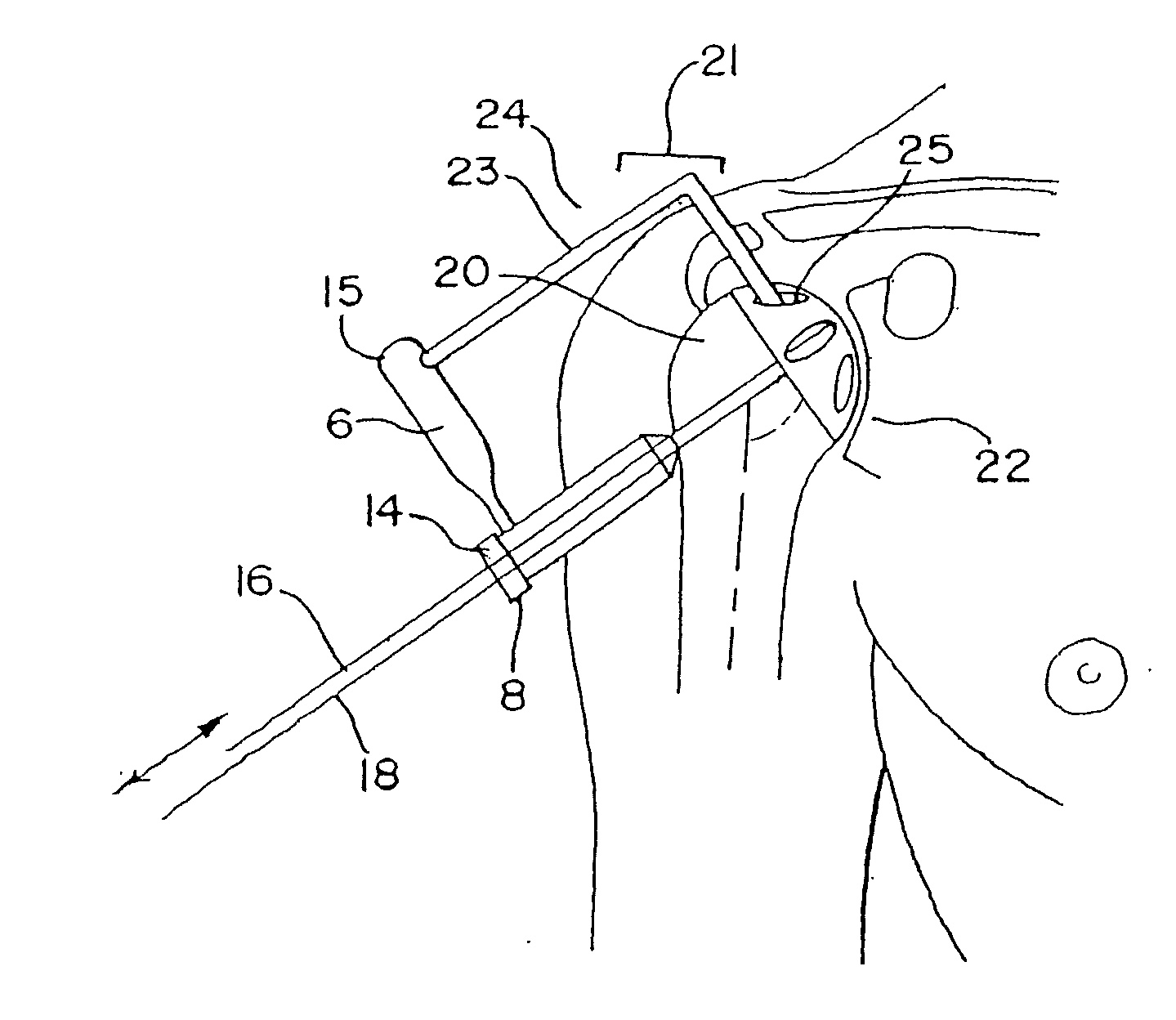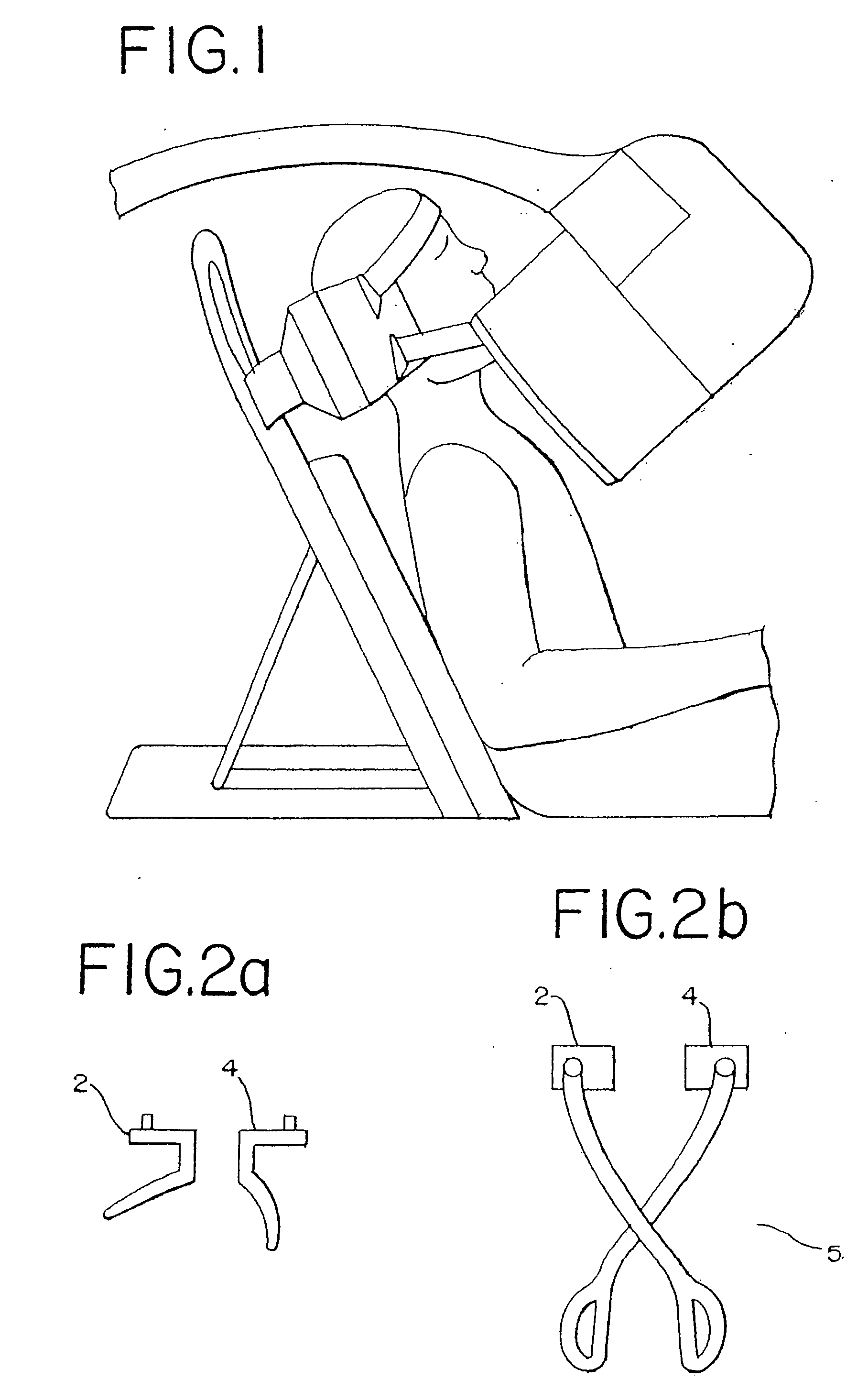Method of minimally invasive shoulder replacement surgery
a shoulder replacement and minimally invasive technology, applied in the field of minimally invasive shoulder replacement surgery and rotator cuff sparing procedures, can solve the problems of glenoid implant fixation and early loosening, irreversible damage to the rotator cuff, and failure to gain sufficient joint access, etc., to achieve superior fixation to the glenoid, safe creation of working portals, and new geometry
- Summary
- Abstract
- Description
- Claims
- Application Information
AI Technical Summary
Benefits of technology
Problems solved by technology
Method used
Image
Examples
example b
[0158] Example B includes a similar humeral surface 96 component and a cemented transhumeral stem 98 (FIGS. 17a-c). Again, the humeral surface component 96 is inserted through the anterosuperior passage, is either cemented or press-fit onto the prepared humeral surface 20 and impacted on the prepared humeral surface 20 against the glenoid 22. Another transhumeral stem 98 which possesses the male end of a morse taper is inserted into the female end on the non-articular side of the humeral surface component 96 and impacted against the glenoid. This stem 98 may be press-fit or cemented to the bony transhumeral portal. An endcap 106 is threaded into the non-articular side of the stem 98 to assist with later removal of the humeral surface implant 94. To fix with cement, a cementation catheter 84 is assembled to an opening in the endcap 106 and cement is injected through the cannulated transhumeral stem 98 exiting holes 99 at its articular end. The cement is injected until it becomes visi...
example c
[0159] Example C includes a similar humeral surface 96 component and an inflatable transhumeral stem 98 (FIGS. 19a-b) similar to technology used in the FIXION™ IM Nail (See “A New Expandable Implant for the Repair of Long Bone Fractures”, Sinha, Anjoy M. D. et al, published in www.Healthfocus.com). Again, the humeral surface component 96 is inserted through the anterosuperior passage and either cemented or press-fit, and further impacted on the prepared humeral surface 20 against the glenoid 22. Another transhumeral stem 98 which possesses the male end of a morse taper is inserted into the female end on the non-articular side of the humeral surface 96 component and impacted against the glenoid 22. The inflatable stem 98 is an expandable tube that is reinforced with longitudinal bars and has a one-way valve system on the end that doesn't mate with the humeral surface component. Once positioned, the stem 98 is inflated or expanded from its collapsed position with a specialized saline ...
PUM
 Login to View More
Login to View More Abstract
Description
Claims
Application Information
 Login to View More
Login to View More - R&D
- Intellectual Property
- Life Sciences
- Materials
- Tech Scout
- Unparalleled Data Quality
- Higher Quality Content
- 60% Fewer Hallucinations
Browse by: Latest US Patents, China's latest patents, Technical Efficacy Thesaurus, Application Domain, Technology Topic, Popular Technical Reports.
© 2025 PatSnap. All rights reserved.Legal|Privacy policy|Modern Slavery Act Transparency Statement|Sitemap|About US| Contact US: help@patsnap.com



